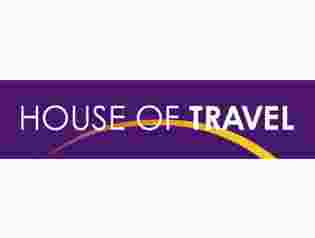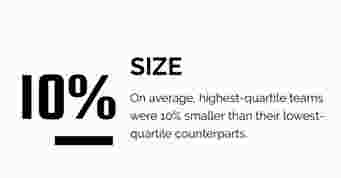In partnership with Team Alchemy (TA) New Zealand, Belbin analysed 20 teams and managers at House of Travel, the largest privately-owned travel company in New Zealand.

The objective was to quantify effective teamwork and collaboration by means of clear, dynamic, data-driven metrics, with a view to building a people-positive and results-oriented culture.
Each of the teams and their managers completed the Team Alchemy analysis (which measured them according to internal and external performance criteria) and the Belbin process, which measured their contributions in terms of the nine Belbin Team Roles.
The background – Team Alchemy and data
The Team Alchemy model identifies six key elements to effective teamwork.
These are named and defined as follows:
- Team outcomes – Performance ethic. Team-first ethos. Recognise contributions.
- Accountability – High standards. Use of milestones to monitor, review and reflect on performance. Confront reality.
- Direction – Clarity and alignment. An action orientation. Commitment to execution.
- Dialogue – Active listening & straight-talking. Sound structure and processes. Use of constructive tension.
- Trust & respect – Give trust unearned. Respect each other. Belief through action.
- Collaboration – Strong external orientation. Proactively engage with key stakeholders. Utilise feedback loops.

Analysing the data
- The teams’ scores for each of the TA elements were collated to give an overall TA performance score.
- The top and bottom quartile teams were identified. Behavioural patterns of the highest- and lowest-performing managers and teams were studied.
- Next, the teams’ Belbin characteristics were examined alongside each of the individual Team Alchemy elements, to identify possible patterns or points of interest.
Findings and Observations - a spotlight on managers
The highest-performing managers know their strengths and contain their weaknesses
Team members gave feedback on their managers using the Belbin Observer Assessment, a questionnaire which asks about the positive and negative Team Role behaviours the team members observed in their managers.
There were some notable behavioural differences between the managers of top and bottom quartile teams.
Top quartile managers derived 91.5% of their scores from positive Observer words and phrases on average, compared to 86% for lowest-quartile managers.

This suggests that the best-performing managers were the most able to articulate (and perform to) their strengths, whilst managing their weaknesses. Whilst their views of their own strengths did not necessarily align exactly with the strengths their teams saw, this suggests a degree of self-awareness when playing different roles and containing potentially negative effects of behaviour on the team.
It is also important to note that some characteristics denoting allowable weaknesses were still in evidence, even amongst the strongest performers. This confirms a tenet of Belbin theory that, whilst it is important to be aware of, and seek to mitigate, weaknesses, it is often counter-productive to expend considerable energy trying to manage all trace of these potentially negative behaviours.
Consistency is key in management
We went on to study the behavioural characteristics of the managers in more detail.
According to their teams, the highest-performing managers tended to be reliable, confident and conscious of priorities, whilst lowest-performing managers were more likely to be seen as impulsive and indecisive. This suggests that consistency is an important feature of leadership in House of Travel’s organisational culture.
Managers: the quest for a subject expert
The managers’ scores on the Belbin Self-Perception Inventory (their views of their own strengths) told a different story, however. Many managers seemed to have an aspiration to be seen as a Specialist – a subject expert. Indeed, the average percentile score for Specialist based on Self-Perception was 69.2.
However, the highest-quartile managers scored most highly for Implementer, Co-ordinator and Teamworker when Observer views (those of the rest of the team) were taken into account.
This suggests that a ‘team-first’ approach (coupled with the ability to organise both people and tasks) were ‘in-demand’ qualities for House of Travel managers.

"The HoT leaders had the courage to take teamworking and cross team collaboration to a level most organisations don’t. There is a new expectation now around what 'good' looks like."
– Bruce Herbert, Team Alchemy
Findings and Observations - a spotlight on teams
Key characteristics for high team performance
The highest-performing teams were more likely to be confident and relaxed and to correct errors. One of the biggest differences between the highest- and lowest-performing teams was in their willingness to adapt: the best performers scored significantly higher for this characteristic.
Overall, the observer word list paints two distinct pictures of team functionality. Although high-performing teams were fearful of conflict, it appears that they communicated more and were perhaps able to resolve problems and catch errors which might otherwise have compromised success.
Likewise, even though the highest performers were more likely to be indecisive, their willingness to adapt seems to have countered this, whilst the lowest performers were more likely to be regarded as sceptical and inflexible.
This suggests that the teams’ varying approaches to challenges played a key role in determining outcomes. The winning teams were willing to discuss and adapt when the path ahead was unclear, whereas the least successful were inflexible, with a grouping of Observer words that indicated more distrust within the team.
The importance of managing weaknesses in teams
As was the case with the managers, the ratio of observed strengths to weaknesses was more favourable for the high-performing teams: 90.2%:9.8% for the top quartile, compared to 85.7%:14.3% for the bottom.
The same caveat as noted for managers should be mentioned here: that, according to Team Role theory, the objective is not to eliminate all trace of weaknesses, but to be aware of, and seek to mitigate, those detrimental behaviours which may threaten the team’s success.

Team size
On average, the highest-quartile teams were 10% smaller than their lowest-quartile counterparts. According to Belbin theory, smaller teams work better because each person can contribute a number of Team Role behaviours, whilst maintaining accountability and allowing all voices to be heard.

Team Balance
The most successful teams tended to have more Strong Examples, and across more Team Roles.
A Strong Example of a Team Role is someone who, for the role in question: is at or above the 80th percentile, has a good level of agreement between Self-Perception and Observer views, and displays considerably more positive than negative behaviours. This enables them to make the contribution effectively and with clarity, and helps others to know what sort of contribution to expect.
These results indicate that teams with greater behavioural diversity – and clarity of contribution – outperformed those with less clearly defined Team Role strengths.
It is important to note that team ‘balance’ is not simply a case of having all Team Roles represented, but rather having areas of acute Team Role strength which are understood and utilised, both by the individuals in question, and by the rest of the team.
Findings and Observations - combining Belbin, Team Alchemy and performance
The teams’ performance across the Team Alchemy elements was analysed alongside their Belbin scores, to look for possible trends and data which could help drive future performance. Not all TA elements aligned with particular Team Roles, so we discuss below only those where Team Role patterns were in evidence.
Collaboration
Positive relationships were discovered between teams’ TA scores for Collaboration and their overall percentile scores for Teamworker and Co-ordinator. The Teamworker score was correlated with internal collaboration performance (‘teamwork’ in Team Alchemy terminology); the Co-ordinator score, with external collaboration performance. This aligns with Team Role theory. Diplomatic and sensitive, Teamworkers generally focus on promoting communication and resolving (or avoiding) conflict within the team. Co-ordinators, who take a broader view, are more likely to liaise and collaborate more with external stakeholders.


"Teamwork for our organization is absolutely vital because we own each business 50:50. So we have to work a way between ourselves to get the job done because no one person has the best idea. That’s a real ethos for how we operate.
I think we were more able and capable as an organization to make the most of the opportunities because we were collaborating at a level that we hadn’t collaborated before and we were working cross functionally as an organization, versus the silos that we had."
Mark O’Donnell – CEO House of Travel
Accountability
Amongst managers, a team’s accountability performance was positively correlated with Specialist scores for managers, and with Implementer and Completer Finisher scores amongst team members. This is an interesting division.
Returning to the TA definition of accountability, we find Completer Finisher in the notion of ‘high standards’, but the other parts of the definition such as ‘Confront reality’ are more ambiguous in Team Role terms. However, Specialists are known for setting – and adhering to – professional standards. Thus it follows that a Specialist manager is able to disseminate and foster a culture of accountability within the team, which is then carried forwards by Implementer and Completer Finisher team members, who work according to these standards.

Dialogue
A positive correlation was found between performance in the dialogue element and the Belbin social Team Roles (Resource Investigator, Co-ordinator and Teamworker) within teams.
Success in this element amongst managers was tied most closely to the Co-ordinator role. This is perhaps because a high Co-ordinator score allows managers to draw out the contributions of others, thereby improving communication within the team as a whole.
By contrast, dialogue was slightly negatively correlated with the thinking roles (Plant, Monitor Evaluator and Specialist). Again, this is in keeping with Belbin theory, since people with these roles tend to work more independently and at a greater distance from the team as a whole.

Direction
As might be expected, a correlation was found between direction and the action roles. With managers, this was more pronounced for the Shaper role, and amongst the rest of the team, it was more closely correlated with Implementer and Completer Finisher roles. The TA element is defined specifically as, ‘An action orientation’, which of course fits neatly with the cluster of action-oriented roles. It follows (along hierarchical lines) that the manager is the most likely to be directing the action (Shaper), whilst the team performs tasks and discharges responsibilities according to this overall direction (Implementer and Completer Finisher).
"It’s been excellent to see House of Travel on their Team Alchemy and Belbin journey, which has helped to provide the foundations for awareness and knowledge to increase team effectiveness. This is where the 'technique of teamwork' makes its performance impact by having the collective knowhow, tools and skills to utilise across the team – benefiting both time and resources."
– Candice Collier, Belbin New Zealand

In conclusion
This study demonstrated that behavioural diversity and team size play key parts in performance across the six TA elements.
It is also worth noting that, while some of the effects described above (such as team size and Team Role spread) are repeatable in other studies, others are likely to be a product of the specific culture of House of Travel, especially the characteristics of managers and teams which led to success.
In Belbin China’s study of regional sales managers at pharmaceutical company, Sanofi, for example, Monitor Evaluator managers tended to fare better, with 'analytical' being the earmark of higher performance.
We help teams and organisations worldwide to boost performance, engagement and retention
If you're using Belbin, great news – you have the big data we need to examine organisational and team culture through the lens of behaviour. We can help you build high performing teams by making the vital connections between Team Role behaviours (and culture) and performance, encouraging greater clarity and understanding around how to deploy strengths in teams.
Contact us to find out more.
Contact us
Please fill out the form and we'll be in touch.